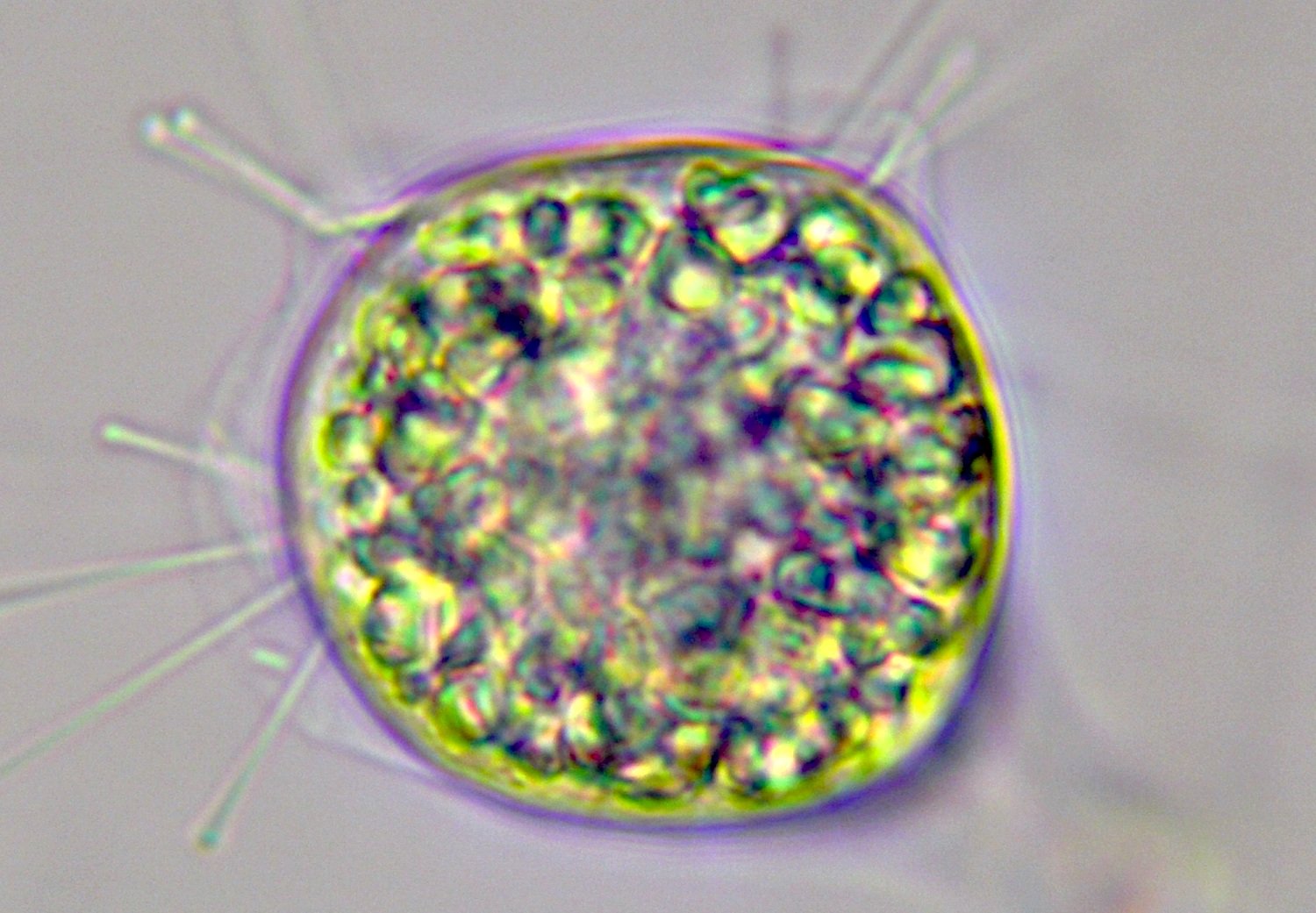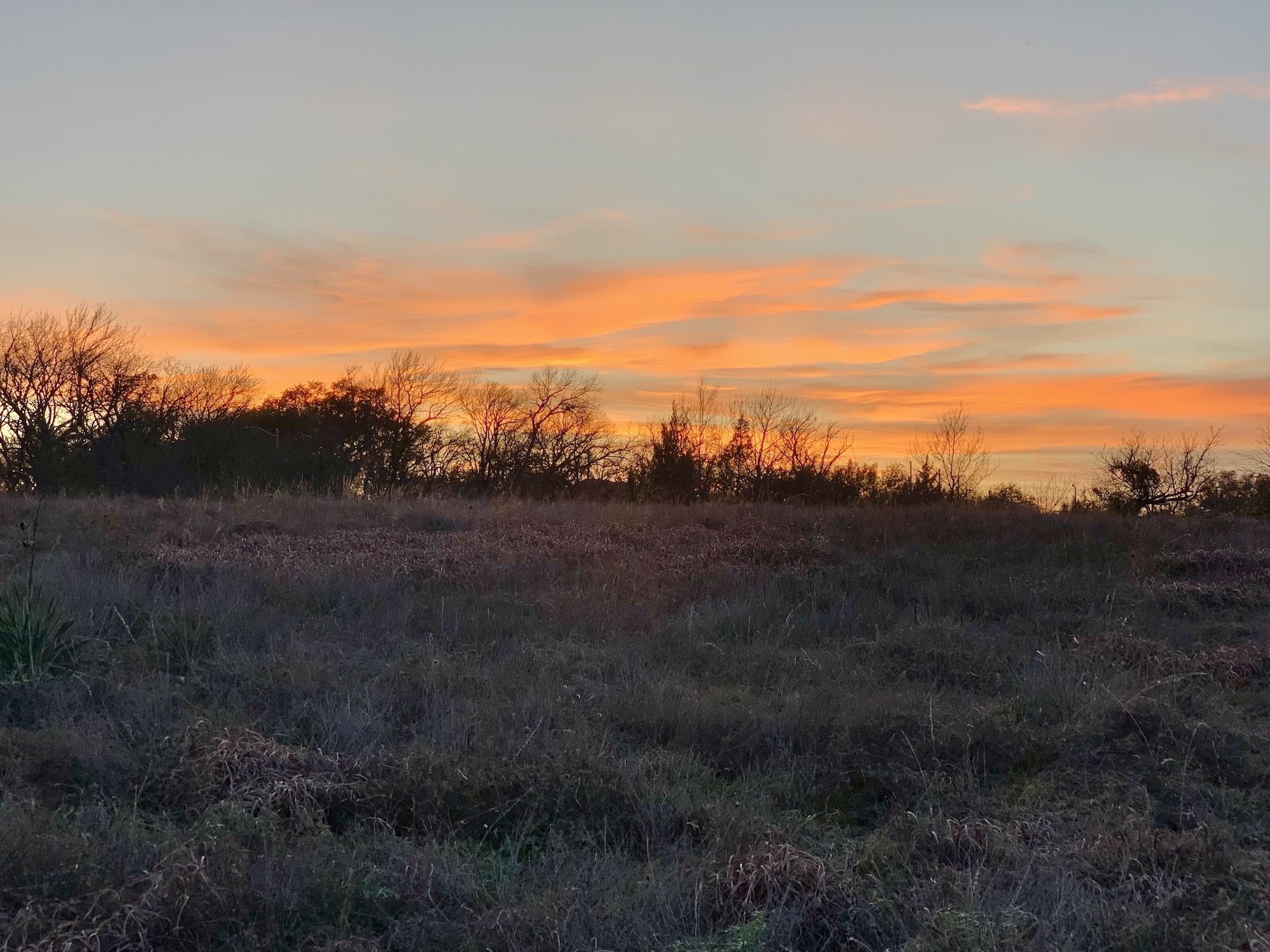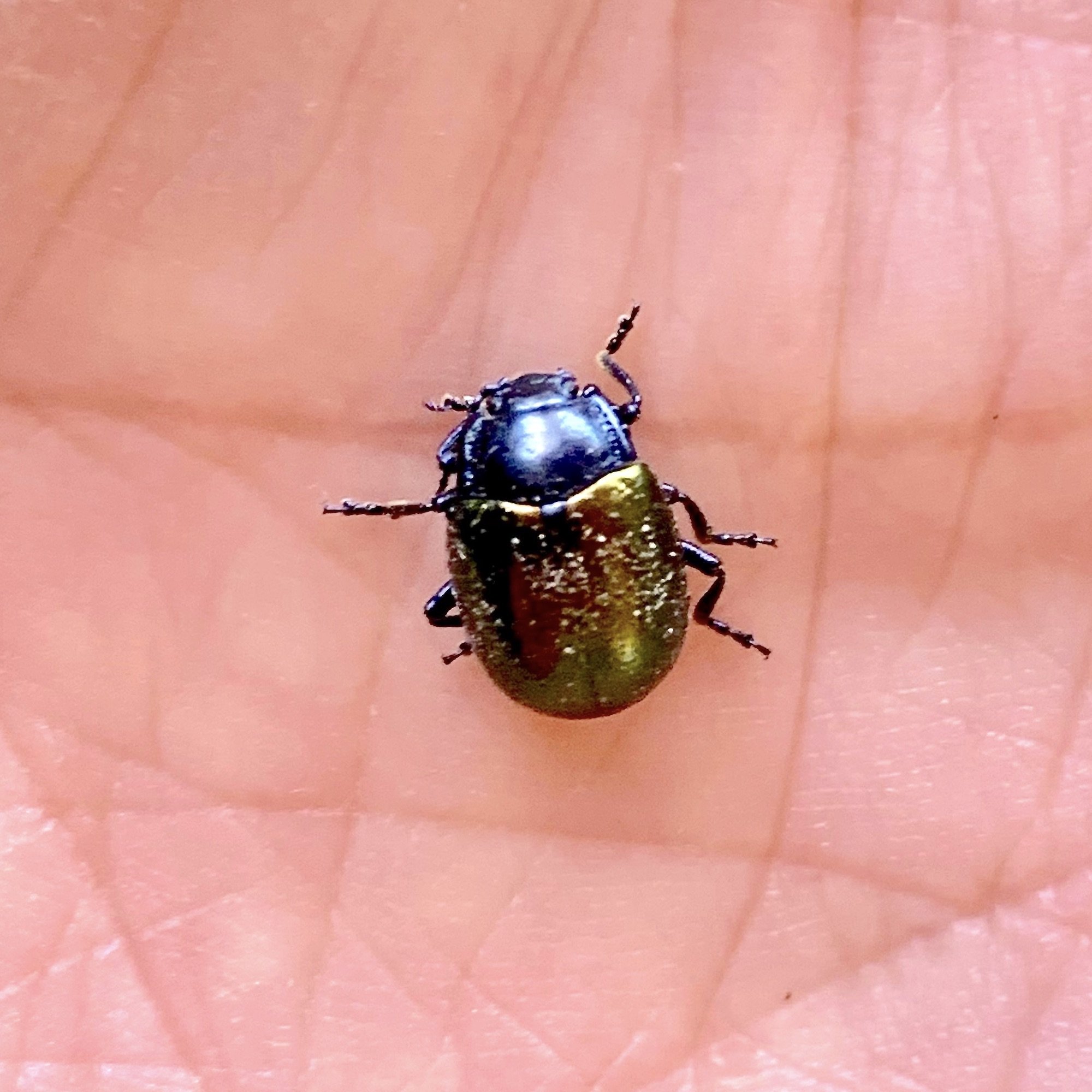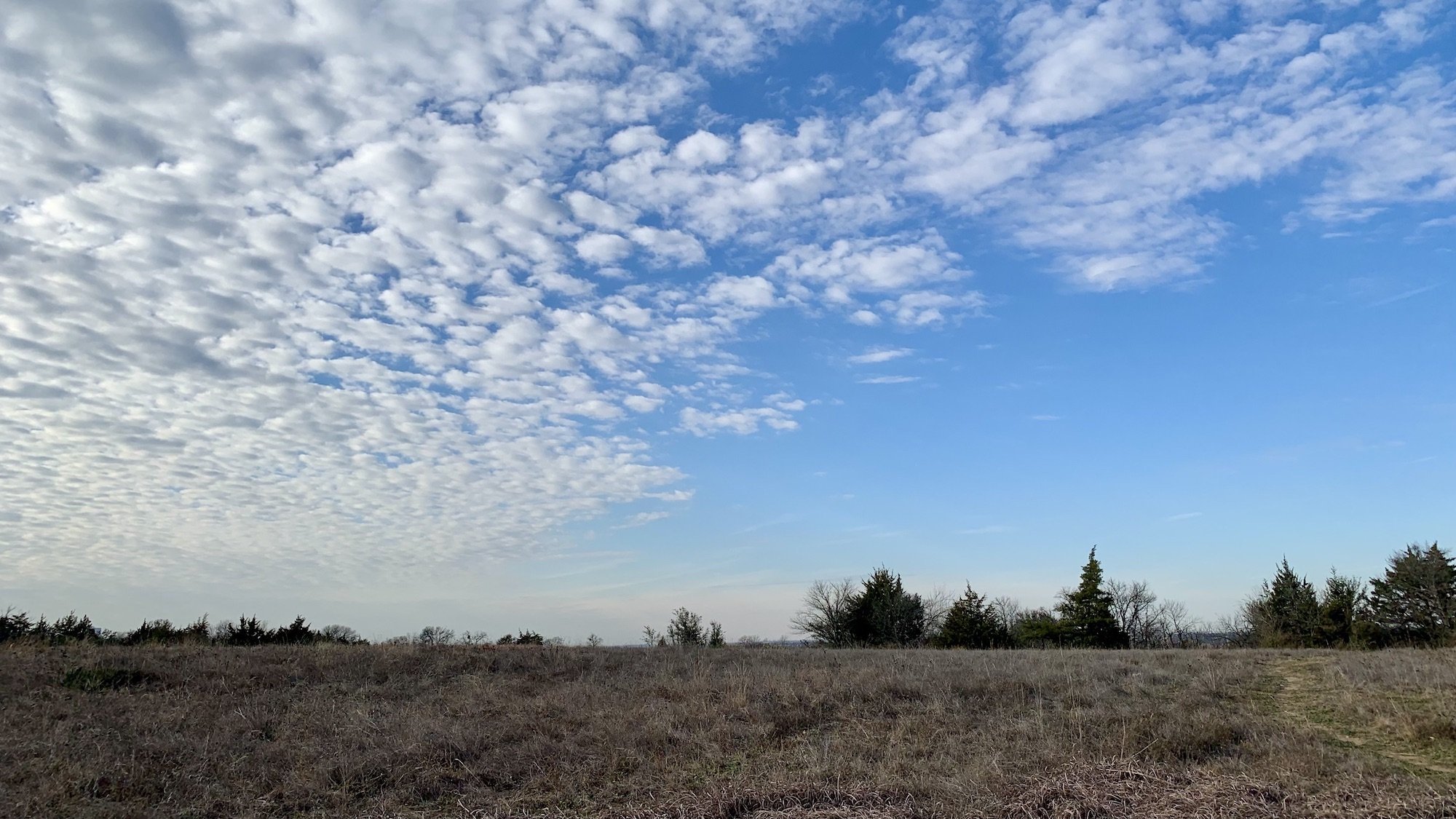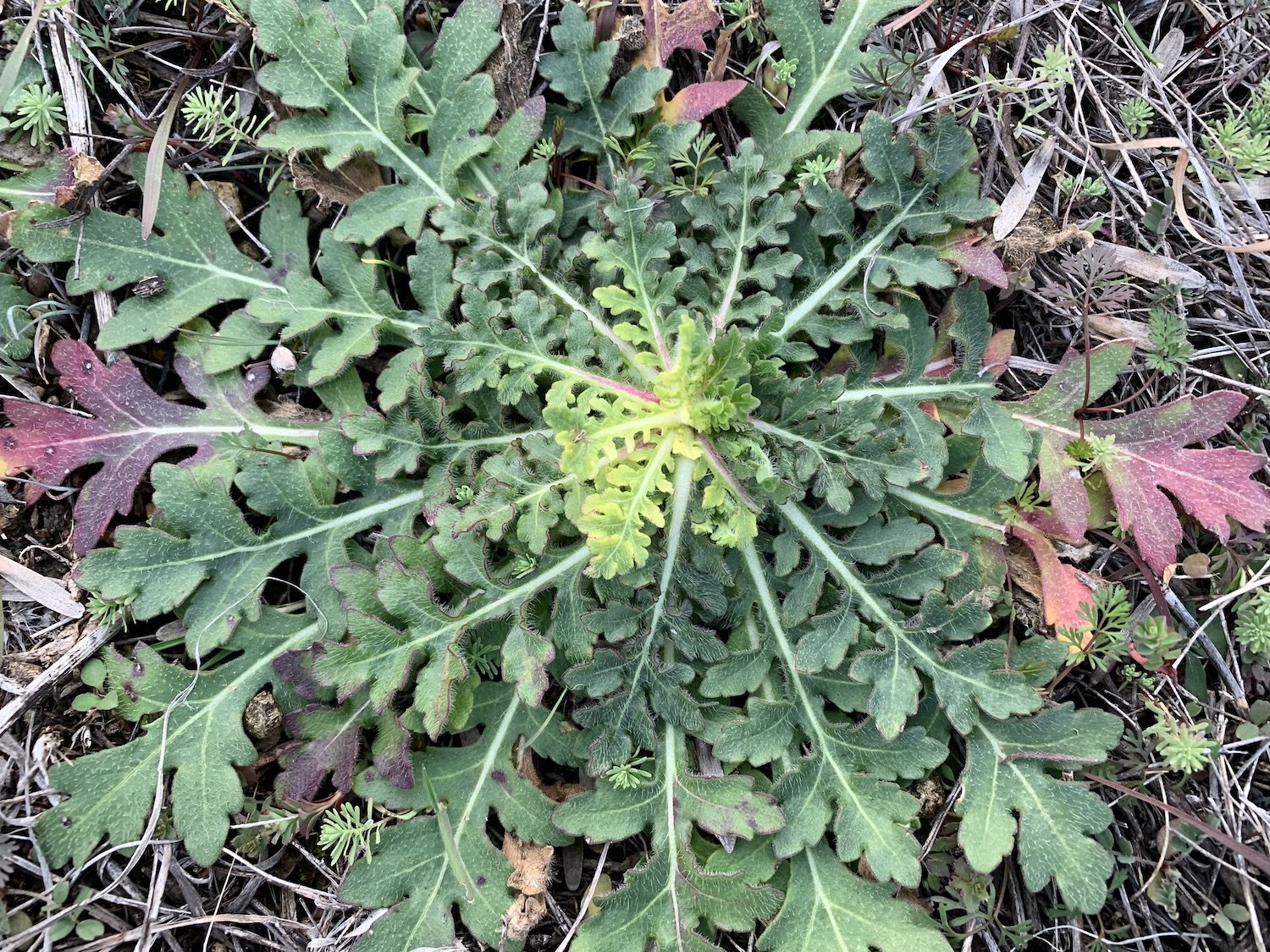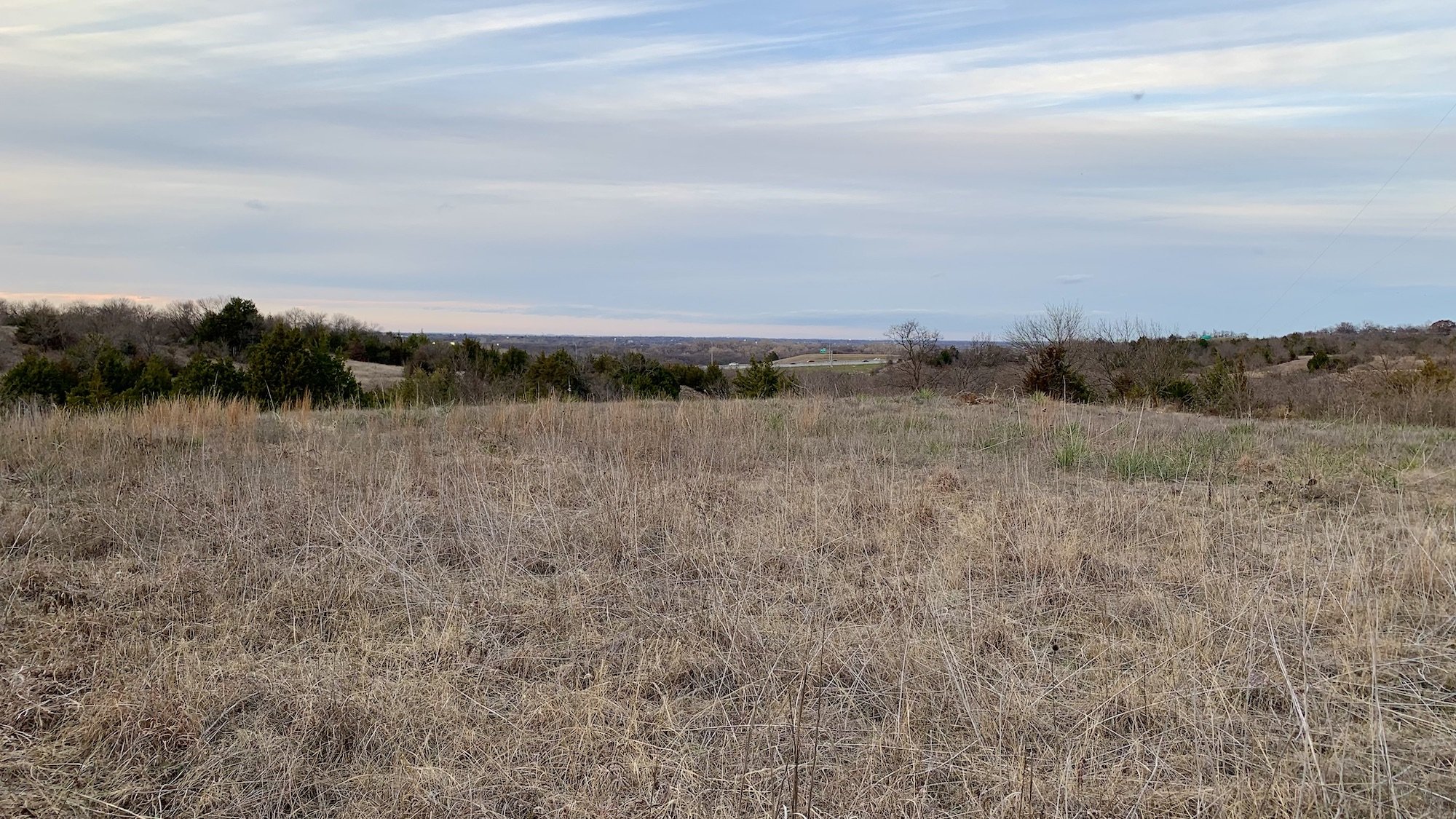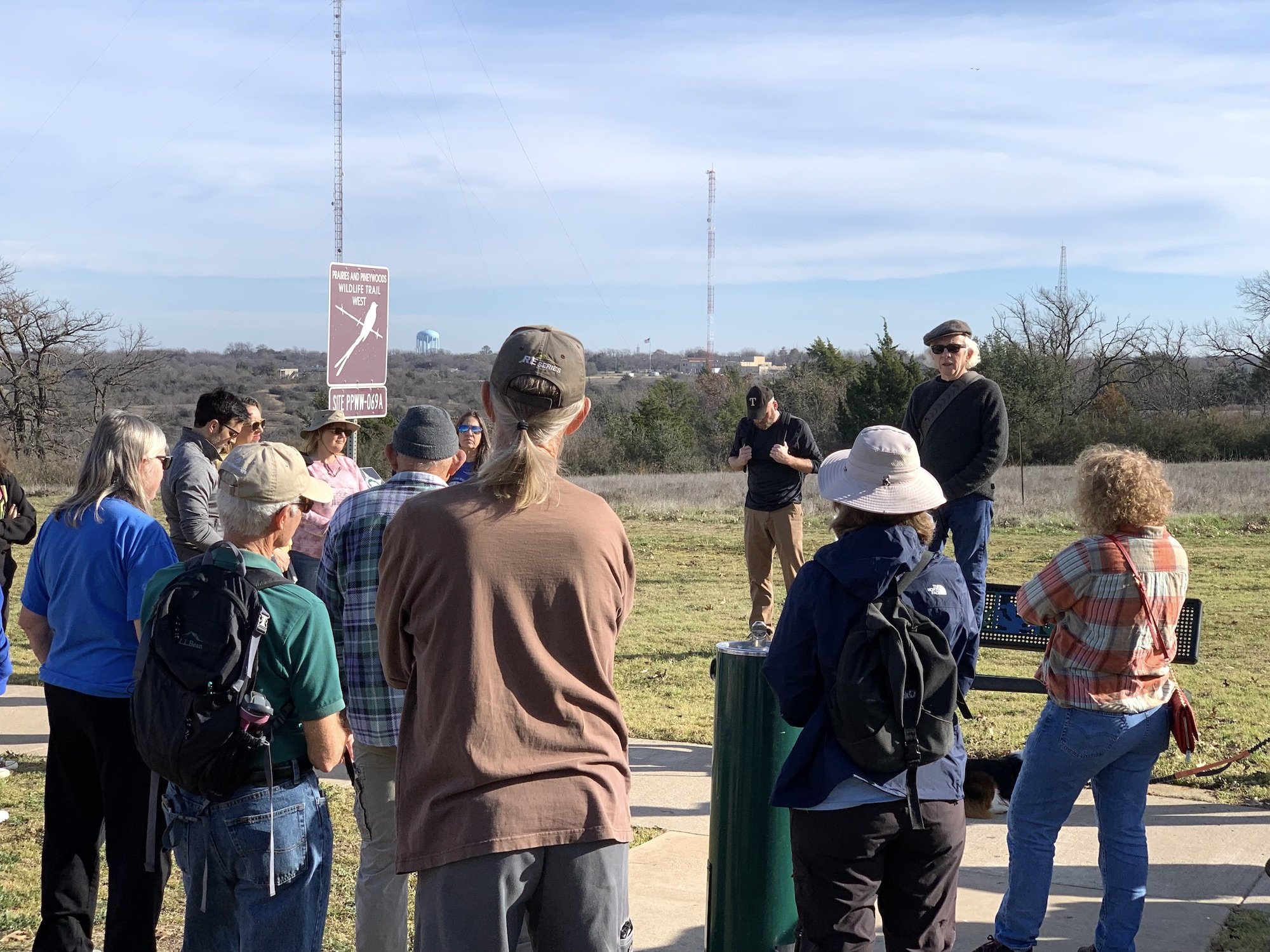Prairie Notes #194 - Looking Closer: Microscopic Adventures at Tandy Hills
Prairie Notes are monthly photo/journal observations from Tandy Hills Natural Area by Founder/Director, Don Young. They include field reports, flora and fauna sightings, and more, mixed with a scoop of dry humor and a bit of philosophy.
They are available free to all who get on the FOTHNA email list.
Looking Closer: Microscopic Adventures at Tandy Hills
Prairie Notes #194
February 1, 2023
1) Looking Closer - by Sam Kieschnick
2) Field Report - January
3) The Green Comets are Coming ! ! !
4) New Species - January
5) 15th Annual Trout Lily Walk w/Sam K
6) Manly Men Wild Women Hike Report
7) Prairie Sky / Star Party 2023 Schedule +
8) Your Membership Matters (nudge-nudge)
9) Prairie Proverb - Henry David Thoreau
1) Guest Column - Look Closer: Microscopic Adventures at Tandy Hills
For many years now, I have been urging you to “look deeper” when visiting Tandy Hills and to “see rather than look” into its wonders. Henry David Thoreau, was an expert at looking deeper and addressed the idea in his journals. In his 1841 poem, Inspiration, he wrote about seeing “beyond the range of sight”.
Now comes, Sam Kieschnick, himself a master at looking deeper into nature and its mysteries. But lately, Sam is looking deeper still as he explains in this Guest Column that he generously contributed to this issue of Prairie Notes. In the process, dozens of new microscopic “critters” and other life forms, were posted by Sam to iNaturalist in January. (See #4 below) Without a doubt, there are many more yet to be discovered.
DY
Look closer - Microscopic Adventures at Tandy Hills
“To see a world in a grain of sand…” is a famous line from William Blake’s Auguries of Innocence written in 1803. I think this can be interpreted figuratively and philosophically, but I think you can also view it literally. One of the ways to examine this universe is through the lens of a microscope. Recently, I was able to purchase a microscope, and one of the first places I wanted to use it was at Tandy Hills. There is a drainage ditch/valley where water collects close to the Stratford Park area, so I went there on January 6th to collect some water and algae. I scooped up a bit of the greenish globs and a bit of soil, so the water sample seemed to be a bit murky… Once home, I light up the microscope, put a tear drop of water on a slide, toss a glass cover slip over that, and wow! What an incredible universe I stumbled upon!
Green slinkies, fuzzy circles, multi-jointed creatures, and geometric mysteries filled the eyepiece. The bottom part of the microscope where the slide is placed is called the “stage,” and let me tell you, I got quite the show! It takes a bit of practice (I’m still practicing) to focus on things, and to get the little critters (or “animalcules” as some of the early microscopists would call them) to slow down for a photograph and short movie in the form of a gif to be uploaded to iNaturalist. If you’d like to see what I saw, here’s the link:
There are countless species that exist at Tandy Hills. All forms of plants, animals, fungi, and microbes call Tandy Hills “home,” and it’s an incredible privilege to engage with these organisms! We share the planet with some magnificent biological beings – a microscope is yet another tool to appreciate the biodiversity at Tandy Hills!
Sam Kieschnick
Urban Wildlife Biologist, DFW
Texas Parks and Wildlife
Here are some links to highlights from Sam’s microscopic adventures posted to iNaturalist:
Vorticellid: A stringy ciliate that forms a vacuum to ingest food
https://www.inaturalist.org/observations/146246883
Bdelloid rotifer: an organism with two chainsaw like mouth parts
https://www.inaturalist.org/observations/146365774
Paramecium: a circular ciliate with a symbiotic relationship with algae
https://www.inaturalist.org/observations/146399956
2) Field Report - January
The crazy January weather had many plant species confused. Was it spring or winter??? A few species jumped the gun and bloomed briefly before being frozen back. At a glance, it definitely looks and feels like winter. Who knows what the spring will look like or when it’s coming. The main meadows have a variety of plant rosettes waiting for the right conditions. At press time, sub-freezing temps are back and expected into early February.
3) The Green Comets are Coming ! ! !
There are TWO Green Comets coming to Tandy Hills in the near future.
One, is a recently discovered, green-hued comet from the outer solar system and set to swing through Earth’s neighborhood for the first time in 50,000 years. You may have heard about Comet C/2022 E3 (Z.T.F.) that will make its closest approach on February 2, coming within 26.4 million miles of Earth. If the sky is clear you can spot it with the unaided eye or binoculars. It is visible as a bright blurry star to the North of the big dipper and next to Polaris (the North star).
The other, a terrestrial body named, Green Comet Milkweed (Asclepias viridiflora), is one of seven milkweed species at Tandy Hills. Its comet-like blooms usually appear in mid-summer/early fall, attracting insects, naturalists and photographers. It is one of the the most strikingly beautiful and strangest looking milkweeds at all stages of its life cycle. No binoculars needed to see this streaking beauty.
Learn more about the comet:
Farmer’s Almanac website HERE
Earth & Sky website HERE
New York Times website HERE
4) New Species - January
Thanks to Sam Kieschnick and his new microbe survey, the species count increased by 39 in January from 1775 to 1814. In addition to the new species mentioned in #1 above, there were, two new fungi, several insects and three new land snails. See three of them below and see them all at the Tandy Hills iNat Project Page HERE.
5) 15-th Annual Trout Lily Walk w/ Sam K.
Tandy Hills Natural Area, aka:, The Land that Time Forgot, is home to many rare and uncommon plant species. One of the most eagerly anticipated of them is the diminutive yet striking, Trout Lily (Erythronium albidum). Being one of the first wildflowers to bloom each year it is sometimes called, the Harbinger of Spring.
Their golden-throated white trumpets hang from curvy stems nestled inside mottled leaves that resemble speckled trout. They are scattered across the Tandy hills and hollers, hiding in secret places.
The Lilliputian wildflowers should be blooming when the one and only, Sam Kieschnick, leads the 15th Annual Trout Lily Walk. Since we aren’t sure yet when they will be blooming, the dates are tentative: Saturday, February 11th or the 18th. Check our website or Facebook page as we get closer.
Get your details HERE.
6) Manly-Men Wild-Women Hike Report
About 75 beautiful people and a few beautiful dogs took part in the 14th Manly Men Wild Women hike on January 1. The hike utilized the recently completed new trail system at Tandy Hills. The youngest participant was 5 year old Adelaide P. (her 3rd year in a row) and the oldest was 75. The weather was perfect and most everyone had a blast. Many others completed the hike independently.
If you completed the hike, send us your mailing address to receive a bona fide handmade parchment certificate of completion. You earned it. Send your address to: info@tandyhills.org.
And thanks a mil for all who showed up at the most vital greenspace in Fort Worth!
7) Prairie Sky / Star Party 2023 Schedule +
The 2023 star party schedule can be found HERE:
Click this link to see current and forecasted weather conditions at Tandy Hills, HERE.
The 2023 season starts on Saturday, March 25, 2023. Until then, FW Astronomical Society rep, John McCrea, has sent the following commentary for home viewing in February:
“For the month of February, the nights will be cold, but the seeing is better because the cold air is drier, making the sky seem to be ablaze with stars. The Milky Way will stretch from southeast to northwest instead of arching overhead from south to north as it did in the summer. We will have our familiar winter constellations. Among the constellations visible will be, Orion (the Hunter), Gemini (the Twins). Canis Major (great dog) and Canis Minor (little dog) rising in the east. Cassiopeia (Queen of Ethiopia), Pegasus (the Winged Horse) and Andromeda (daughter of Cassiopeia and Cepheus) will be high in the sky. Perseus (Rescuer of Andromeda), Taurus (the Bull) and our friend the Pleiades (the seven sisters). The winter triangle (Procyon (11.5 LY), Betelgeuse (500 LY), and Sirius (8.5 LY)) will in the east. Our circumpolar friend Ursa Major (the Great Bear) will be nose-up on the east-northeast horizon. The winter hexagon, consisting of Capella, Aldebaran, Rigel, Sirius, Procyon, Pollux, and Castor will be visible in the south/southeast.”
8) Your Membership Matters
We don’t beg. We don’t plead or harass. But we will gently nudge you because we need your support. Become a Friend of Tandy Hills, HERE:
9) Prairie Proverb
“I hear beyond the range of sound,
I see beyond the range of sight,
New earths and skies and seas around,
And in my day the sun doth pale his light. ”
Prairie Notes© is the official newsletter of Friends of Tandy Hills Natural Area, a 501 (c)(3) non-profit organization. All content by Don Young except where otherwise noted.






